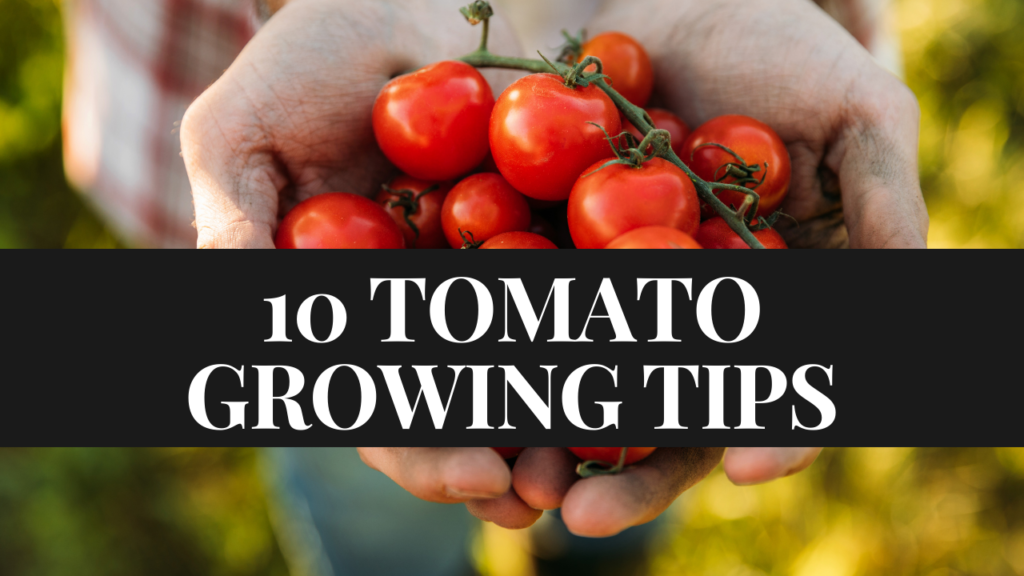In this article, we are going to talk about 10 terrific tomato growing tips for beginners.
Growing tomatoes is a popular reason for beginning a vegetable garden. Every tomato fan fantasizes about growing the perfect tomato: firm yet juicy, sweet but tangy, aromatic, and blemish-free.
Tomatoes, sadly, are one of the vegetables that are more susceptible to problems than others. The secret to growing delicious tomatoes is to pick the right varieties, get the plants off to a good start, and avoid problems before they occur. To ensure your tomato bragging rights this year, start with some tried-and-true tomato growing tips.
10. Getting Your Tomato Plants to Set Tomatoes.

Tomatoes’ ripening is primarily dependent on the weather, but we can often speed things up. Early in the summer, pinching off the tips of the main stems encourages indeterminate tomatoes (those that produce fruit continuously) to begin flowering.
Don’t be surprised if your tomato plants don’t bloom for the first month or two. Indeterminate tomatoes prefer to grow tall before setting fruit. Pinching is also a useful technique for getting the last tomatoes to ripen before the end of the season.
Having determinate tomatoes (those that ripen all at once) to set fruit shouldn’t be a problem unless weather conditions are unfavorable and cause a condition known as “blossom drop.”
9. Water Regularly.
While the fruits are growing, water deeply and often. Irregular watering, such as skipping a week and attempting to make up for it, causes blossom end rot (calcium deficiency), as well as cracking and splitting. The general rule is that your plants should receive at least 1 inch of water per week, but they can need more during hot, dry spells. Offer your plants a drink if they’ve been wilted for the majority of the day.
You will reduce the amount of watering until the fruit starts to ripen. Less water would encourage the plant to concentrate its sugars, which will result in a better taste. Make an educated decision. Don’t deprive the plants of water to the point that they wilt and become exhausted, or they’ll lose their blossoms and probably their berries.
8. Pinch and Prune for More Tomatoes.
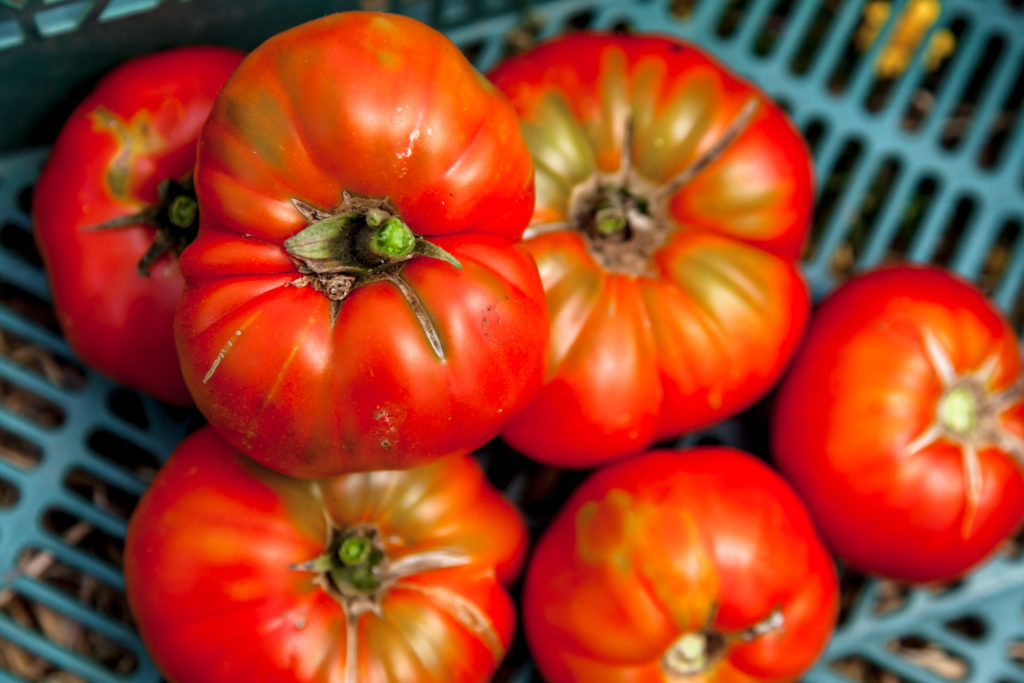
Suckers that form in the crotch joint of two branches should be pinched and removed. They will not produce fruit and will deplete the resources of the rest of the plant.
Pruning the rest of the plant, on the other hand, should be handled with care. You can remove a few leaves to allow the sun to reach the ripening fruit, but the leaves photosynthesize and produce the sugars that give your tomatoes flavor. There will be less sweet tomatoes if there are fewer leaves.
7. Remove the Bottom Leaves.
Another important method for preventing tomato disease is to remove the bottom leaves of each tomato plant. Since the lowest leaves are nearest to the surface, removing them decreases the possibility of fungal spore splash-up. Only extract the leaves from the bottom 8 to 10 inches of the plant stem, some gardeners remove much more.
To extract the lowest leaves, cut them off where they cross the main stem with a pair of scissors or pruners. If your tomato plant has already shown signs of disease, wash the scissors with Lysol or Clorox before going on to the next plant to prevent spreading the disease to other plants. You can also pinch off the leaves with your finger and thumb, but you should wash your hands before switching from a diseased plant to one that isn’t.
6. Mulch immediately after planting.
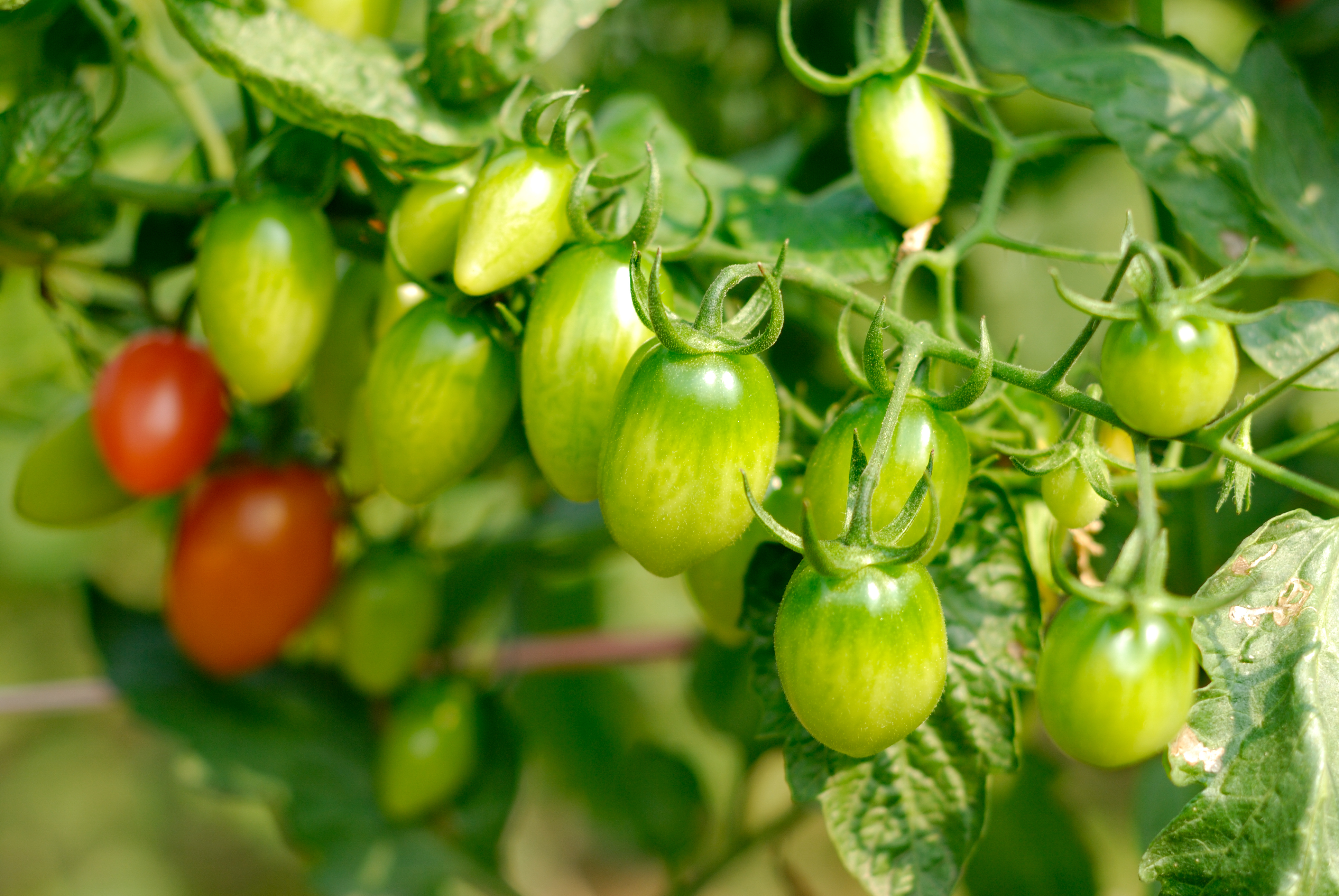
Without fail, savvy gardeners take advantage of this tomato-growing secret. Mulch tomato transplants with weedless straw, shredded leaves, or untreated grass clippings as soon as possible after planting. Mulch reduces weeding and watering requirements during the season and suppresses common soil-borne tomato diseases, including blight and leaf spot. Since these pathogens’ spores are found in the soil, the mulch prevents the spores from splashing into the plant foliage. Mulch should be 2 to 3 inches thick, and it should be applied before watering in your freshly planted tomato plants.
5. Bury the Stems.
Plant your tomato plants up to the top few leaves, deeper than they came in the pot. Tomatoes can grow roots all the way down their stems when planted this way. And a plant with more roots is thicker.
You have two options: dig a deep hole or dig a shallow trench and lay the plant sideways. It will easily straighten up and rise in the direction of the sun. Just make sure your tomato stake or cage doesn’t get caught in the buried stem.
4. Preheat the Garden Soil.
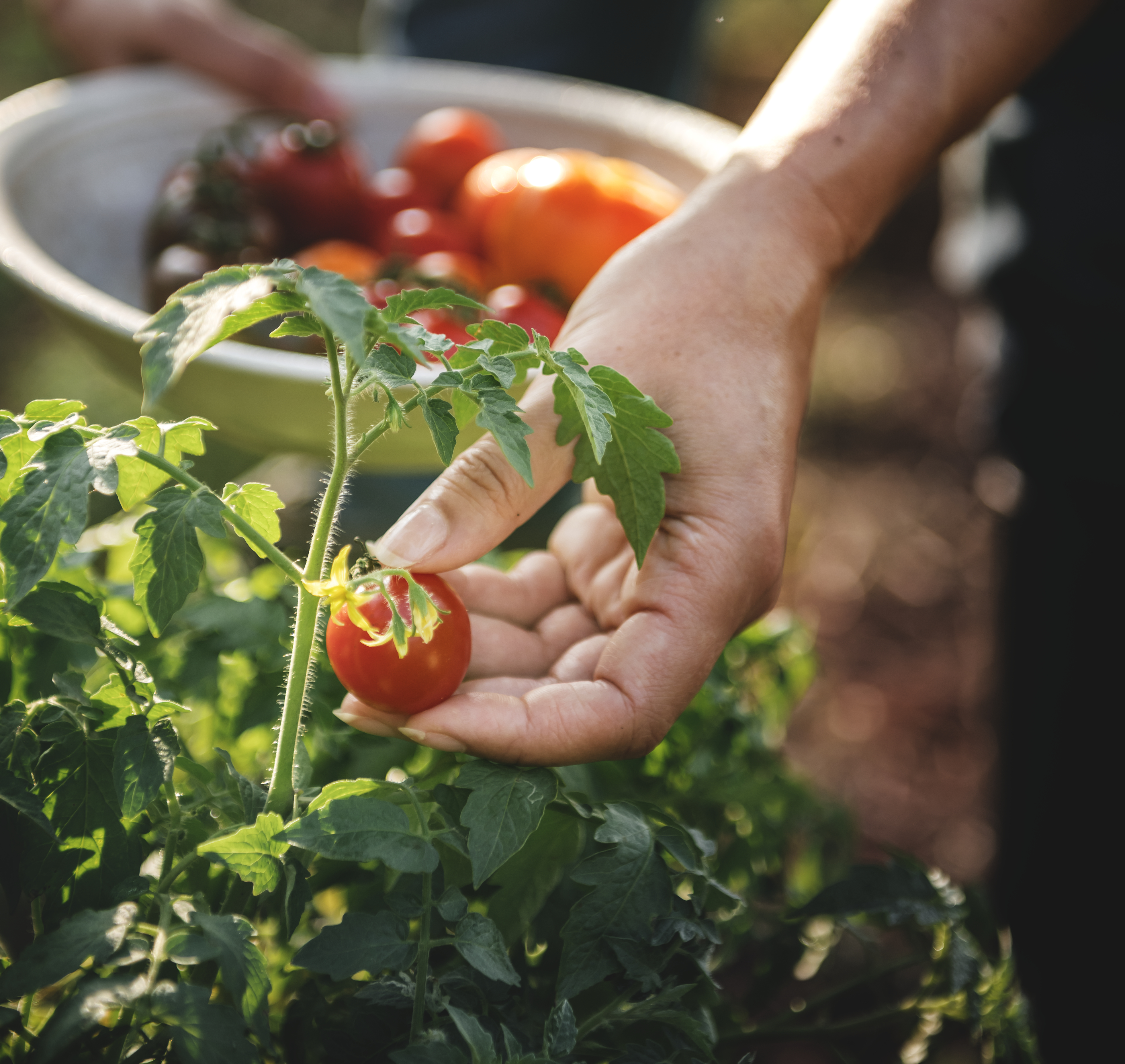
Tomatoes thrive in hot environments. They won’t begin to grow properly until the soil, and air temperatures are both warm. Cover the planting area with black or red plastic for a couple of weeks before deciding to plant to speed things up in the soil. Those extra degrees of soil warmth can result in tomatoes that ripen sooner.
You can remove the plastic before planting, but some research suggests that red plastic mulch can increase your tomato yield.
3. Turn a Fan On.
To grow strong stems, tomato plants must move and sway in the wind. This occurs naturally outside, but if you’re starting seedlings indoors, you’ll need to have some kind of air circulation. Switch on a fan for five to ten minutes twice a day to provide a breeze. A little bit of time would make a significant difference.
Another choice is to gently brush your hand back and forth over the tops of the tomato plants several times a day to ruffle them. It takes a little more time, but you’ll get a bonus for their delicious tomato smell.
2. Provide Lots of Light.
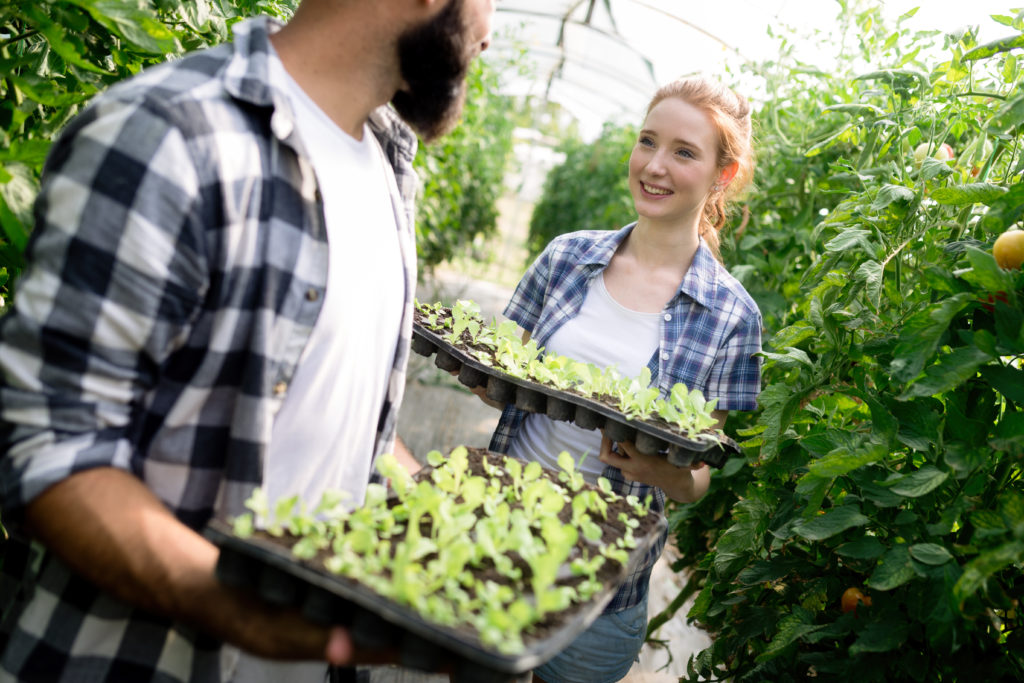
Tomato seedlings need bright, direct light to develop. Since the days are short in the winter, even putting them by a sunny window may not be enough to provide them with enough natural light. If you’re growing them in a greenhouse, the safest choice is to use 14 to 18 hours of artificial plant lighting every day.
Keep young tomato plants just a few inches from fluorescent grow lights to ensure stocky, not spindly, growth.
As the seedlings grow, you’ll need to lift the lights (or lower the plants). When you’re ready to plant them outside, locate them in the sunniest area of your vegetable garden.
1. Don’t Crowd Tomato Seedlings.
Give seedlings plenty of space to branch out if you’re starting tomatoes from seed.
Yes, thinning the seedlings down to one strong plant per cell or small pot is needed. Snip the smaller, weaker seedlings to make room for the most robust grower. Their development is stifled by overcrowding, which stresses them and contributes to disease later on. When tomato seedlings have their first set of true leaves, transplant them into their own 4-inch containers.
Make sure the seedlings have plenty of space to stretch their wings. Their development is stifled by overcrowding, which stresses them and contributes to disease later on. Tomato seedlings should be transplanted into their own 4-inch pots as soon as they have their first set of true leaves.
This post has been all about tomato growing tips for beginners.
If you are looking to start your garden, check out the links in the description for our recommended books and audiobooks.
Don’t forget to download the free ebook too.
Backyard Gardening Book (paperback)
Backyard Gardening Book (audiobook)
Urban Gardening Book (paperback)
Urban Gardening Book (audiobook)

